How Often You Need to Wash Your Dog, According to Professional Dog Groomers
My senior dog Archer is a lovable tricolor mix, but his bright white fur is quite visible and quickly shows dirt. As he's not a high-energy dog, he's not typically dirty, which got me wondering: how often do you really need to bathe your dog if they don't look dirty?
However, I don't see any original text to paraphrase. Instead, I'll provide a response to the query.
How frequently you should bathe your dog depends on several factors, including their breed, age, health, and lifestyle. Generally, most dogs require a bath every 1-2 months unless they get dirty or have specific skin allergies. It's essential to consult with a veterinarian for personalized advice on your dog's bathing needs.
Would you like some breed-specific bathing recommendations?
Discover the ideal amount of relaxation time for your furry friend.
s Read Up newsletter Get ready for an exciting week with extra fun highlights in pet care, laughter, home organization, travel adventures, technological discoveries, and fascinating facts around every corner!
Why is it that regular washing of your dog is necessary?
Bathing goes beyond just cleaning your dog's paws from mud and eliminating any doggy smell. It's a crucial part of keeping your dog both healthy and comfortable. As the biggest organ on a dog's body, its skin is home to a complex ecosystem of bacteria and fungi that work together to protect overall health. When the skin gets dirty or damaged, it can disrupt this balance, leading to infections and weakened immune systems. For dogs with existing skin issues or allergies, regular bathing plays a significant role in their treatment plans.
Bathing has additional benefits for your pet beyond its physical health. It can make your dog feel more comfortable in its own fur. "Bathing removes dirt and debris, as well as getting rid of dead undercoat, which in turn can reduce shedding," noted Kurt Dennis, pet expert from Pet Supplies Plus in Tampa, Florida.
Regular baths for your dog are essential as they significantly decrease the amount of dander that can cause allergic reactions.
Give your furry friend a refreshing treat and a happier, healthier life!
How frequently should you bathe your dog:
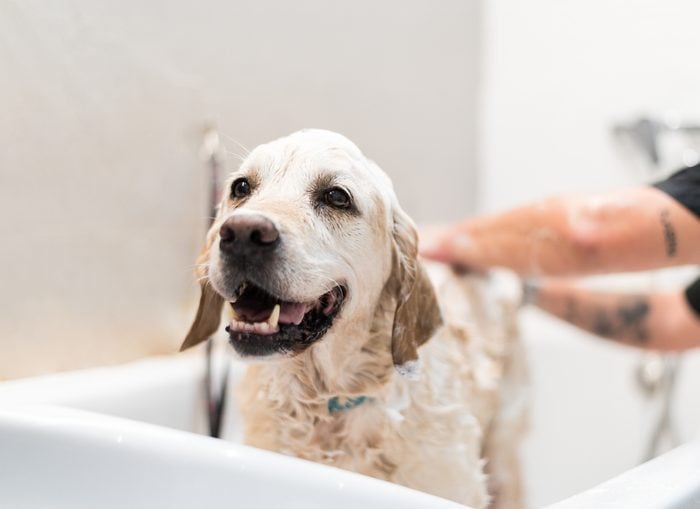
You have a dog that needs washing? The frequency depends on a few things, like the breed, health, coat length, and activities your dog is involved in. Generally, it's recommended to bathe your dog every four to six weeks, Dennis advises.
Let's explore some key considerations that might influence how often you bathe.
Type of coat
Some dog breeds, like the Chinese crested, need to be bathed every week or two to stay healthy. Typically, short-haired dogs should get bathed about every six to eight weeks. However, the frequency of baths can vary depending on a dog's coat type, with dogs having softer and oilier coats needing more frequent baths than those with harder and drier ones.
For dogs with double coats, like retrievers, terriers and herding breeds, regular bathing isn't always necessary. This is because their outer coat pushes dirt away and protects them from the elements. The oil in their undercoat keeps them warm in the cold and cool in the heat, but excessive bathing can remove those oils. As a result, these dogs usually need to be bathed only every two to three months or less.
Teacup breeds, like the Yorkshire Terrier and Shetland Sheepdog, often require more frequent bathing due to their coats retaining dirt and debris, typically every one to two months.
Allergies and skin conditions
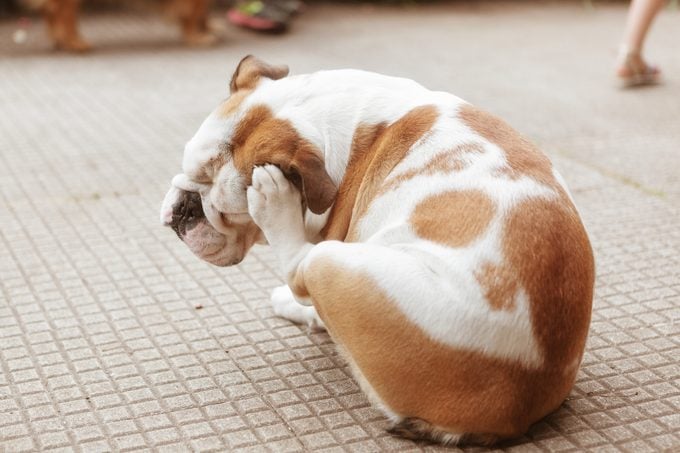
If a dog is dealing with skin issues like allergies, I always suggest owners consult with their vet, as they can recommend the suitable shampoo and conditioner or a medicated option with use instructions and dosages.
Type of activity
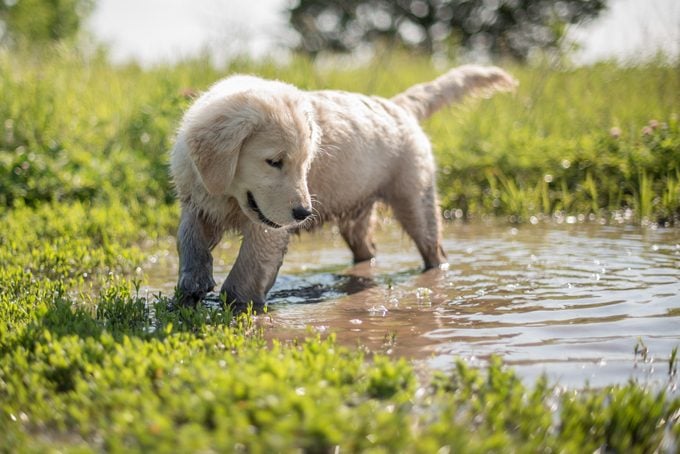
It seems your dog's stinky situations rarely occur right after its bath. If another bath is needed, use a dog shampoo and/or conditioner specifically designed for dogs to help maintain the moisture in their skin, which is essential for their overall health.
A good cleaning is extremely important. "I would wash the dog after they get out of the pool and also if they've played in another body of water, to get rid of any pool chemicals and any other objects stuck to their coat," says Dennis. Additionally, if the water is extremely dirty or murky, a full bath may be required.
What Are the Consequences of Not Washing Your Dog Frequently Enough?
Redness, pain, and more can make your dog extremely uncomfortable.
Bathing your dog is also a good opportunity to give it a thorough inspection. While your dog is in the tub, check on the condition of its ears. If they're dirty, you can clean them while the dog is being bathed, resulting in two tasks accomplished at once.
Trim your dog's toenails by yourself.
When washing your dog, should you use a dog-specific shampoo every time?
Researchers claim that companies that study the characteristics of dog skin and fur find better performance in their shampoo line, with reduced irritation and better skin and coat health, according to Bissantz.
The key to choosing the right shampoo for your dog is based on scientific principles. Just like humans, dogs have a protective acidic outer layer on their skin, which prevents germs and viruses from getting in and also keeps their skin hydrated by letting it absorb water and not lose moisture too quickly. When you give your dog a bath, you get rid of this protective layer. Thank goodness, shampoos and soaps contain moisturizers and other helpful ingredients to protect the skin until its natural acidity layer regenerates.
For this process to be effective, shampoos and soaps need to preserve a dog's natural skin pH balance. This is where it gets fascinating. A person's skin tends to be more acidic, whereas a dog's is more neutral. Additionally, humans have 10 to 15 layers of skin cells. Meanwhile, dogs have just three to five layers of skin cells, making it crucial to maintain their skin barrier's health. Using shampoo on a dog that's formulated for humans disrupts the process of regenerating the skin's acid barrier and puts dogs at risk for skin problems.
Don't use dog shampoo on cats, as not all pet shampoos are safe for them, states Bissantz.
When you're giving your dog a bath, there are several key factors to consider to make the experience safe and efficient for both you and your pet.
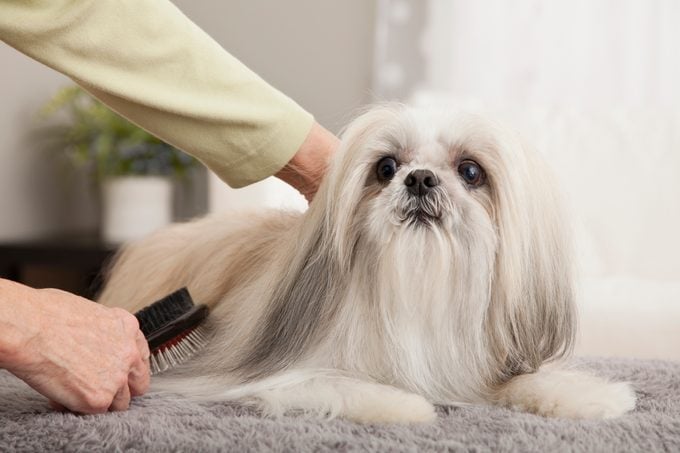
Don't enjoy getting all soaped up and then rinsed off? It's up to dog owners to make bath time as safe and pleasant as it can be. Here are some ideas to consider before fetching your furry friend for a bath.
- It's recommended to brush your dog's longer-hair coat before bathing. Wet fur becomes completely tangled much more easily than dry fur, leading to difficulties in detangling and potential discomfort for your dog.
- Add a non-slip bathmat to ensure your dog has traction in the tub and doesn't slip or slide around.
- It's essential to keep the water at a comfortable temperature for the dog. And it seems like 75 to 95 degrees Fahrenheit should be just right for their comfort, according to Dennis.
- Attach a frozen lick pad with suction cups to the tub wall to engage and calm your dog during bath time.
- At the start of the bath, squirt ear flush into the ears to help break down excess earwax. "This makes cleaning the ears 1,000 times easier," notes Bissantz.
- Don't forget to add eye wash to your shopping list. "A soothing eyedropper stream can be used on your dog's eyes before and after a bath to make sure their eyes are washed clean of any soap or debris," advises Dennis.
- Giving a quick towel rub and letting the coat air dry can lead to problems with the skin and mats that can get tight and cumbersome. For dogs with thick fur, it's better to coax the moisture out with a towel rather than rubbing with it. "If your dog can stand the noise of a hair dryer, it's possible to dry and brush specific areas of the coat; using a hair dryer cuts the time it takes to dry and brush the entire coat down by up to 30 minutes," says Bissantz.
Can you over-bathe your dog?
Like getting a mud bath or stepping in something rotten - that's going to need more scrubbing in the shower, but don't overdo it.
Keep in mind that excessively bathing your dog can deprive it of the necessary time to restore its skin's natural acid barrier, leading to potential negative effects. "Bathing too frequently can result in skin sensitivity or an imbalance of moisture, increasing the risk of skin infections, such as hot spots or bacterial or fungal infections," says Bissantz.
Over-bathing and failing to dry your dog properly can actually make shedding worse and lead to severe matting, which can put your pet at risk of bacterial and fungal infections, according to Bissantz.
To get the right amount of soap on your dog, it's a good idea to know what works best. If you're still unsure, you can always ask a veterinarian for advice on the right amount of soap for your dog.
About the experts
- In Boise, Idaho, a local canine and feline grooming service operates. The entrepreneur has been a professional groomer for over six years and learned the trade in her first grooming class, which she took in middle school. Her own dogs, Buddy, a border collie mix, and Cyrus, a Chihuahua mix, are relatively easy to groom, but she is particularly skilled at working with difficult dogs.
- In Tampa, Florida, the individual has spent the last 34 years working in the pet-grooming industry. Their roles within this field have been diverse, encompassing those of a pet groomer, salon leader, and a trainer tasked with leading regional salons. When not focused on beautifying and pampering other pets, they devote time to caring for their two toy Chihuahuas, Gizmo and Nathan, as well as their adopted domestic short-haired cat, Luna.
Source:
- Soaps, Cleaning Agents, and Hair Care Products
.

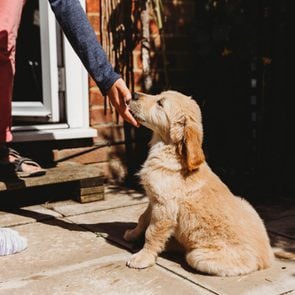
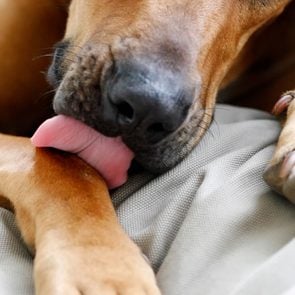
Post a Comment for "How Often You Need to Wash Your Dog, According to Professional Dog Groomers"